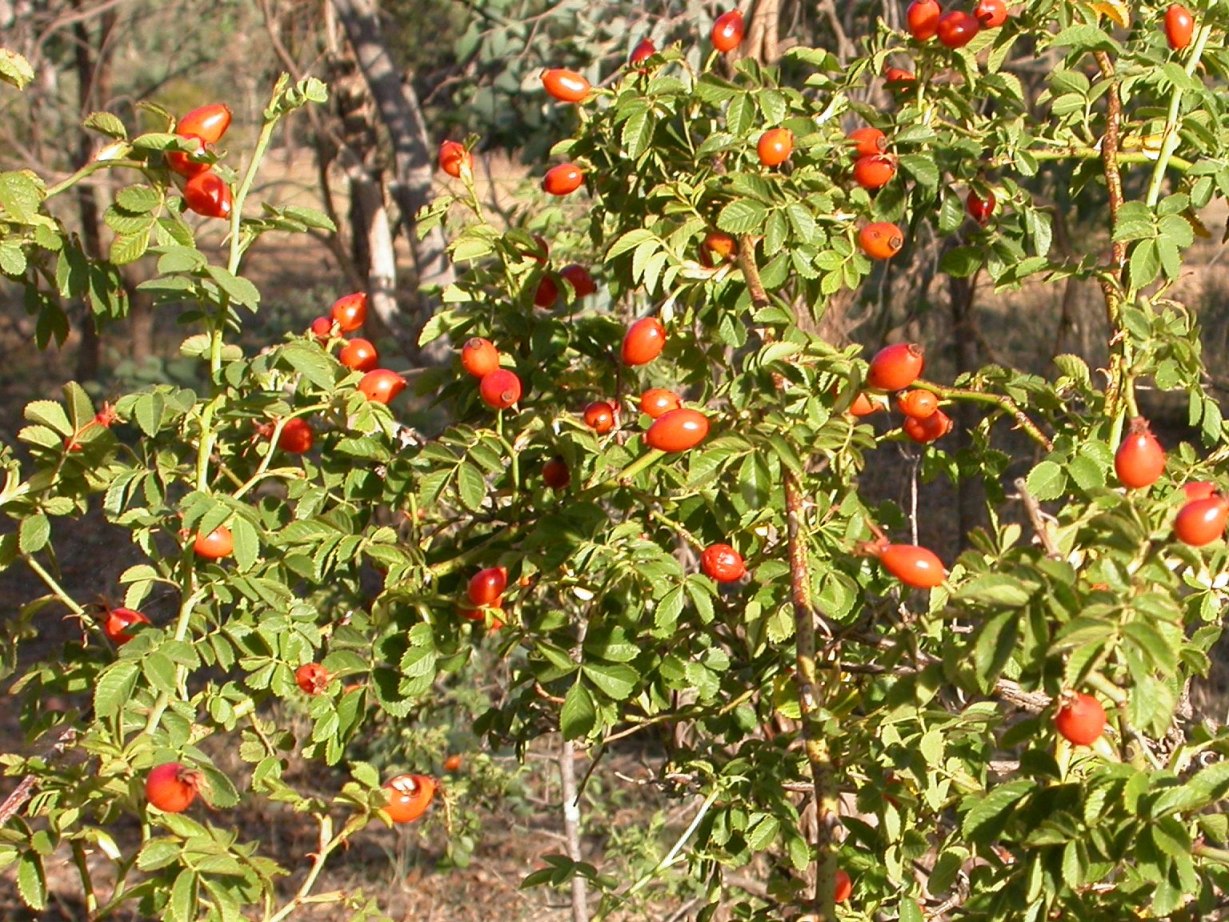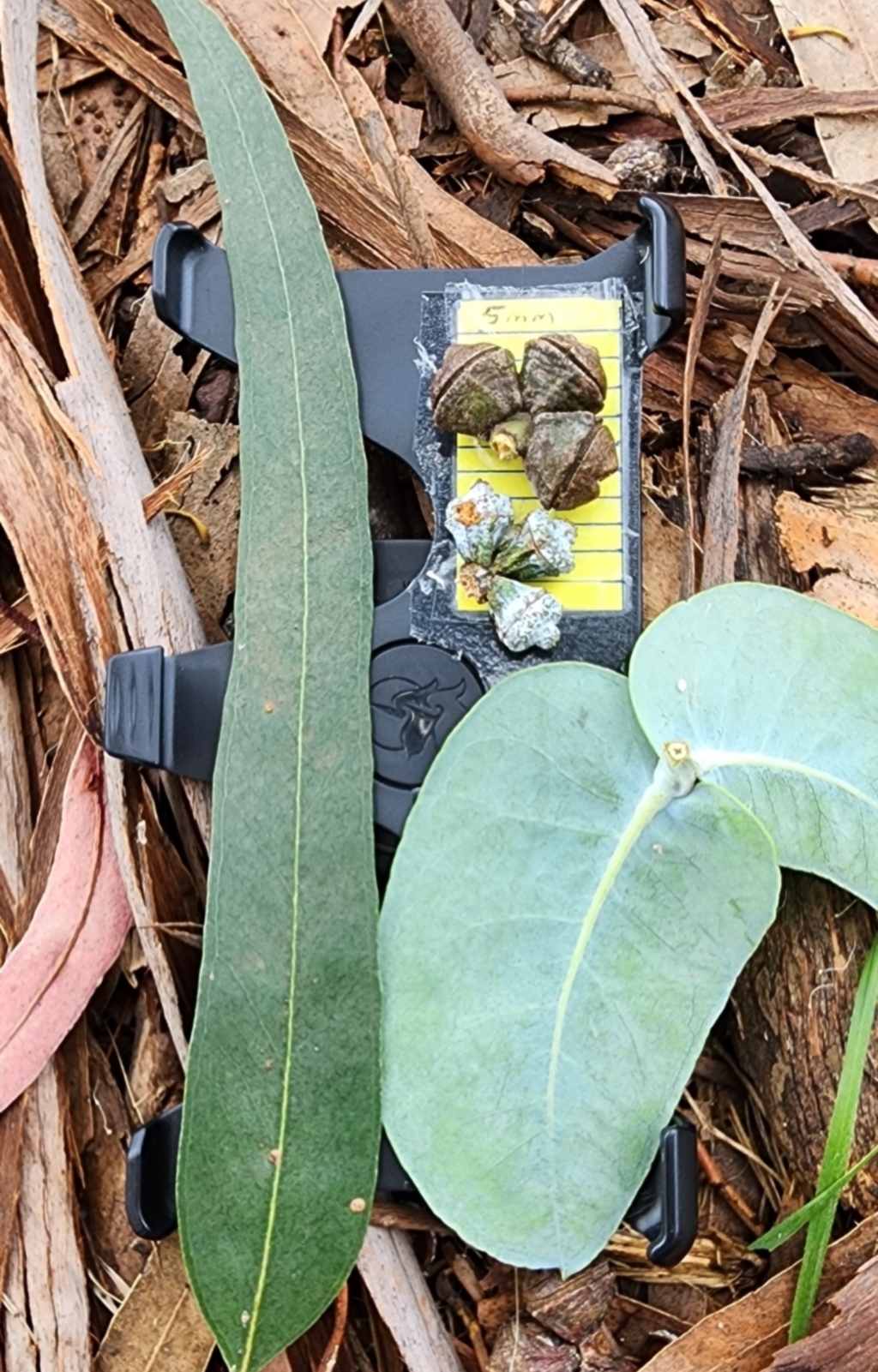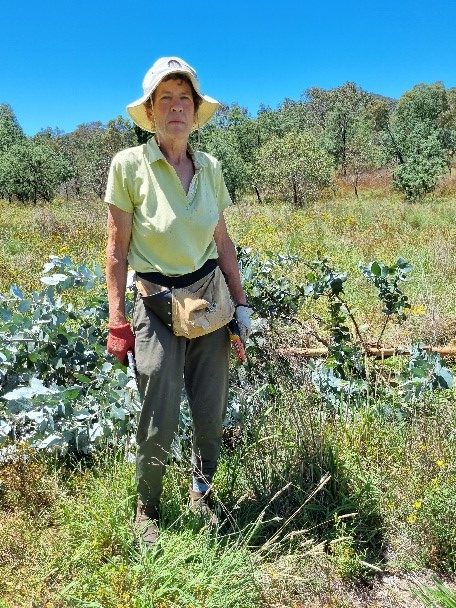
Sweet Briar, Rosa rubiginosa is a common weed of Mt Majura. The seeds are spread by birds and foxes that eat the rose hips (photo W. Pix)
After our January working bee in the reserve area adjacent to Valour Park, Friends of Mount Majura will be returning there to cut and dab briars and pull Southern Blue Gum seedlings from 9 am to noon on Sunday, 25th February in a shady site mostly under trees.
And while we are at it, we will also tackle other woody weeds and Serrated Tussock.
When: Sunday, 25 February 2024 from 9.00 am to 12 noon.

The distinguishing features of Eurabbie, Eucalyptus globulus subsp. bicostata are the warty 2-ribbed blue-green buds, shown in the middle below the fruits, that grow in groups of 3s, the large stalk-less bluish-white juvenile leaves (right) growing opposite on square-sectioned branch-lets, and the leathery, glossy dark-green and up to 30cm long adult leaves (left) (photo Canberra Nature Map).
Where: Meet at the nature park entrance near Tay and Ian Nicol Streets, North Watson; click here to view a map with the meeting and volunteer registration point and blue outlining the target area.
Bring and wear: Sun protection, eye protection, sturdy boots, body covering garden clothing and garden gloves if you have them; we’ll provide tools, herbicide and nitrile gloves to tackle the weeds.
Tip: take some Blue Gum branchlets with juvenile leaves home for their decorative appearance and powerful eucalyptus perfume.
Enquires: secretary@majura.org
More about weeds in the Blue Gum patch
The up to 45 m tall Eurabbie or Southern Blue Gum, Eucalyptus globulus subsp. bicostata is a beautiful tree from Victoria’s forests, i.e. not local to this area. So the grassy woodland of the Mt Majura Nature Reserve is not the place for them and we will have a small blue gum forest if the seedlings are not removed. We should do this regularly because the large trees in Valour Park drop their gumnuts into the reserve.

Harriette who wielded the saw, in front of the fallen blue gum; the stump was treated with glyphosate. Photo by Liese Baker.
In January we did find seedlings and even a few large plants, and one twice as tall as us, just starting to get its adult leaves at the top.
The most common woody weed we found in January in our target area was Sweet Briar roses (Rosa rubiginosa) from small ones to quite large ones. Birds and foxes spread these prickly plants when they feast on the rose hips, so we collect and bag any hips on the treated plants.
We will also be on the look out for other woody weeds in this area, like Cootamundra Wattles (Acacia baileyana), deciduous trees such as Hawthorns (Crataegus monogyna), Nettle Trees (Celtis australis) and English Elms (Ulmus procera), and any Blackberry (Rubus anglocandicans).
These can all be tackled using the cut and dab method of applying the herbicide glyphosate. The highlighted plant names have links to photographs of them taken by FoMM members and uploaded to Canberra Nature Map. For more photos of our worst woody weeds see FoMM’s Flickr album.
And other weeds we could come across are St John’s Wort, and the grasses Serrated Tussock and Chilean Needlegrass. These grasses are difficult to identify but some of us have experience to guide us and will be there to help with any unknown plants.
Chemical control of woody weeds using the cut & daub method
Cut stems close to ground level and immediately treat cut surface with herbicide glyphosate (Roundup or equivalent product) applied at high concentration i.e. 1 part glyphosate : 2 parts water; apply herbicide mix with a hand-spray or paint the cut surface with a dabber.
The plant’s natural protective mechanism acts very quickly to seal off the cut surface and this stops herbicide penetration into the sap stream. It is therefore important to treat the cut surface immediately, i.e. within 30 seconds after cut; the longer the treatment is delayed, the poorer the result will be. If necessary, cut and daub each stem of multi-stemmed plants separately to avoid delayed herbicide treatment.


